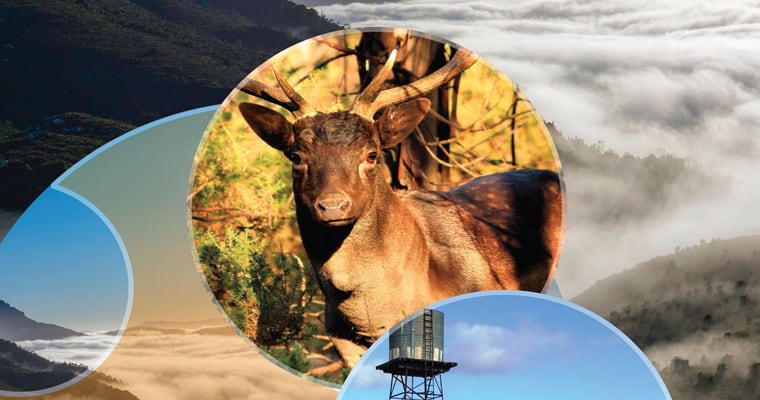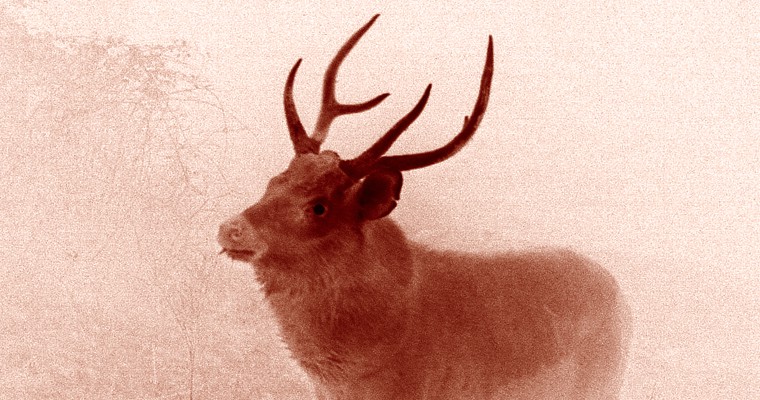Tasmania is facing a feral deer crisis, as new population numbers show a dramatic increase of 33% in just 5 years, according to the government’s survey report released today.
The Invasive Species Council says the findings confirm that current management policies have failed, as successive governments prioritised maintaining deer numbers for recreational hunting at the expense of the state’s farmers, fragile habitats and local communities.
‘These numbers are staggering and should be a wake-up call for the Rockliff Government. The population has dramatically increased by 33% in the past 5 years, despite the 2021 management plan promising numbers would decline. This is causing mounting losses for farmers, trampling fragile habitats and pushing native species closer to extinction,’ Dr Tiana Pirtle, Conservation Officer at the Invasive Species Council said.
‘The scale of this crisis and the failure to reduce numbers is shredding the agricultural and environmental legacy of the Rockcliff Government. We call on the Premier to give his new Primary Industries Minister, Gavin Pearce, a free hand and the resources to bring Tasmania’s feral deer crisis under control and to stand up to the hunting lobby.
‘We need a complete change of direction. Minister Pearce has the obligation to seize the opportunity, and if he is bold, he will be remembered as the minister who finally brought Tasmania’s feral deer crisis under control.
‘Alarmingly, the survey has shown a huge jump in deer numbers outside the Midlands in zone 2, where estimated numbers have increased by more than 3-and-a-half times. This shows that poor management in the Midlands is having a spillover impact on other parts of Tasmania.
‘It is also worrying that there has been a significant westward spread towards high conservation areas in the Wilderness World Heritage Area, around the Walls of Jerusalem and the Central Plateau.
‘Policies to date have prioritised recreational hunting as the primary management tool and failed to curb deer population growth. There is a wealth of evidence to show that the only effective approach is properly resourced, long-term, coordinated professional programs to protect Tasmania’s native wildlife, farms and public land.
‘We were encouraged to see the Liberal Party’s ambitious 100-day commitment during the election campaign to double down on managing feral deer and finalise a new Invasive Species Action Plan. We support the government turning those commitments into on-the-ground action, with clear targets, consultation with stakeholders, adequate funding and strong leadership.’
TasFarmers CEO Nathan Calman said:
‘Feral deer are having a significant impact on our natural environment and our state’s farmers.
‘Assuming that a deer will eat on average twice that of a sheep, the lost productivity cost of the deer population is estimated at $87 million annually based on current lamb market prices. A price our state’s primary producers know is far too high to justify the interests of a relatively small group of recreational hunters.
‘Their ‘partially protected’ status as a hunting resource is nothing short of nonsense, with there being absolutely no difference in the classification of rabbits and deer.
‘As we approach this tipping point, we need to acknowledge that what we have been doing since the 1980s simply isn’t working. Any change that can create a vacuum for removing deer from the landscape should be embraced.’
The Invasive Species Council is calling on the Rockliff Government to:
- Remove the legal protection of feral deer under the Wildlife Act
- Commit at least $8 million over the next 4 years for professional feral deer control, including aerial shooting.
- Urgently expand and intensify control programs in the no deer Zone, including the Tasman and Freycinet Peninsulas, Bruny and King Islands, around Hobart and Launceston
- Revise the zoning system in the Deer Management Plan from the 3 zones (sustainable hunting zone, mixed management zone and no deer zone) to 2: a deer management zone and a deer eradication zone. Continue and expand the aerial control program on the Central Plateau to protect the World Heritage Area.
‘These are practical, highly effective measures that, with leadership, can get ahead of this problem now and avoid the kind of unmanageable feral deer disaster we’ve seen on the mainland – before it’s too late,’ Dr Pirtle said.
Media inquiries: (02) 8006 5004
Background:
- In a letter to the Invasive Species Council, then-Primary Industries Minister Jane Howlett wrote: “A re-elected Liberal Government will finalise a new Invasive Species Action Plan within 100 days of coming into Government to tackle invasive species, including feral cats and rabbits.” This 100-day commitment included:
- Finalise a new Invasive Species Action Plan to tackle invasive species
- Finalise work required to streamline Zone 1 permits for the eradication of deer under the Deer Management Plan.
- Double down on deer on crown lands
- Make Zone 3 a complete eradication zone
- Develop a new deer plan following new survey data
The scale of the problem:
- Feral deer numbers have exploded across Tasmania – Within the boundaries of the 2019 survey area only the report finds “the population increased from 53,660 +/- 19% deer in 2019 to 71,655 +/- 19.6% deer in 2024, a multiplication factor of 1.3357, and thus a rise of 33.57% in 5 years (equivalent to a ~6% rise per annum).
- The report also finds that “proportionally, the greatest increase in estimated population was seen in Management Zone 2, where estimated numbers increased by more than three-and-a-half times”.
- The majority of feral deer are in the Midlands, but satellite populations have spread to the Tasman and Freycinet Peninsulas, Bruny and King Islands, around Hobart, Launceston and in the northwest.
- Feral deer cause damage to native vegetation and ecologically fragile areas through over-browsing, over-grazing and trampling, with negative impacts on biodiversity and the Aboriginal cultural landscape.
- They are costing farmers an estimated $87 million per year in lost productivity through damaged crops and infrastructure, with similar impacts on forestry.
- Large males weigh upwards of 80 kg and are a major risk on the road – between 2013 and 2021, 68 deer-vehicle collisions were recorded, with more likely going unreported.
- Feral deer remain legally protected in Tasmania as a game resource under the Wildlife (General) Regulations 2010. Tasmania and Victoria are the only states that continue to treat feral deer as a hunting resource instead of managing them as an invasive species.
Photo credit: Tasmanian Land Conservancy.







